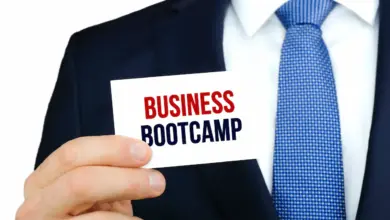Tips for the first 100 days of a startup
The first 100 days are often the most important in the life of a startup business. Whether it’s dealing with the pressure of creating a cash flow forecast that works, or securing the trademark for future expansion, what actually happens in these first three and a bit months can determine whether or not the business is successful down the track.
Names and trademarks
While it can be tempting to simply dive in and start operating, there are a number of precautionary measures that ought to be taken to ensure they’re successful beyond the start-up phase.
Before you settle on a business name, it’s wise to investigate whether the domain has been taken, and whether or not the trademark has been registered. While it’s not necessary to trademark a business name in order to conduct business, it can seriously inhibit growth if your company takes off down the track.
“A lot of the business that we meet just rush out and register the business name, thinking that offers them some level of protection, but in reality, it doesn’t protect you from anything,” says Yvette Adams, director at the Creative Collective.
Other than the trademark database on IP Australia, Adams suggests businesses take a look at NameChk.com, a service that lets owners gauge the availability of their business name across a multitude of social networks.
For more information on trademarking and protecting your business’s intellectual property, read How To Protect Your Brilliant Idea.
Branding
It’s essential to get the branding right in the first 100 days of a business. According to Stephen Rinaldo, director of branding consultancy Rubicon Retail, the key to a successful brand lies in having an accurate knowledge of the customer’s expectations.
“Where I see a lot of businesses go wrong is they don’t know who their customer is, and they don’t know what their customer wants or what their customer is expecting,” he says. “They often build brands around what the retailer wants people to think as opposed to what the customers will want to perceive about them.”
The most compelling brands are those that illustrate their relevance to customer’s needs by way of a simple, implicit narrative.
“Make sure you know exactly what you stand for as a business,” advises Craig Griffiths, founder of aptly-named retail search engine Ask Find Buy. “This has to be as simple a message as possible. One sentence with one meaning is all you need. If you can get it down to a few words even better.”
Accordingly, the messaging behind a brand should come before a logo, a color scheme, or a website.
“Quite often, when clients come to us, they’re very much focused on the visual outcomes – the way things look – but they’re not very focused on the strategy behind the business, and what it exists to serve for,” says Boyd Roberts, director of Big Picture Group. “Having a very clear and simple brand messaging is really, really important. It’s all about telling a story. I always tell clients it needs to be simple like a child’s book, because, when you read a book to your kids, you read it over and over and over again, and sometimes you read it in a different way. You use the language the child understands. Sometimes people don’t use the language that their market understands.”
To learn more about branding a small business, read Why Colour Is Important In Branding.
Business operation
Every great business is built on the strength of an idea, but success always depends on how well realized that idea is in a practical context. Rossco Paddison, the founder of the Fame Equation, claims business owners often waste time trying to do too many unnecessary things in the early stages of a startup.
“As a business owner, I believe you can only be doing one of two things that are productive – creating or selling,” he says. “When I say creating, I mean designing a new product or service to sell – or you could be selling.”
He believes small business owners too often fall into the trap of trying to perfect their product before they actually start operating.
“People are too busy trying to make it perfect and holding it back, rather than putting it out there and getting the actual market’s feedback. They really need to create their products or services, put them to market, and then refine them,” he says. “The only way to test the product effectively is to let it hit 500 people first. Otherwise, statistically, it’s not a measurement. If you don’t test your product on 500 people, then you can’t say that it’s wrong or right.”
Sales
Paddison goes so far as to suggest that, after drawing up a business plan, finding customers is the first thing any new business should do.
“What they should be doing as their very first step is looking for sales straight off the bat,” he says. “They should be looking at getting a consistent heartbeat to their business from day one. That should be their number one focus.”
The most direct approach to finding your first customers is to simply pick up the phone.
“The best place to start, and it sounds almost ironically simple, is in the address book of their phone: to call every single person they know. Make a list of 50 possible clients you know and 50 you don’t, and work your way through them,” he says. “Worry less about business cards and more about who your first clients are going to be.”
Online marketing
A database of email contacts is one of the most valuable resources for a business trying to market itself online, so it pays to start compiling one in the very earliest stages.
“You’ve really got to look to build a database quite quickly in the early stages,” advises Creative Collective’s Adams. “I designed a survey with an incentive, where I asked people questions that for me drew really meaningful, important data – and the responses turned into prospective leads.”
Given that the key to success with social media comes largely from building momentum over time, it pays to get started on platforms like Twitter and Facebook early on so you already have an audience to address once the business finds its feet.
For businesses planning to market themselves online, it’s also essential to draw up a list of keywords and phrases to form the basis of a search engine optimization (SEO) strategy. Like social media, SEO is a process that you can’t reverse engineer, so the earlier you start, the better.
While it can be tempting to get carried away with marketing, it’s also wise to exercise restraint, especially in the early days, when budgets are tight.
“Never do a single bit of marketing that can not end in a sale,” says Ask Find Buy’s Griffiths. “Everything must have a call to action on it. This will still build brand awareness in the mind of your customer. But just getting your name out there only works if you Coke or Pepsi. Leave the awareness advertising to the boys with the billion-dollar budgets. If you’re advertising you must be able to monetize it. You must be able to know where your success comes from, or what has caused it, so you can repeat that success.”
Cash flow
Understanding that cash flow is more than just a profit and loss statement is crucial to the success of any business. It’s important to forecast for and factor future costs and profits into your everyday expenditure.
“It’s about predicting what your bank balance is going to be month by month for the next 12 months or more, so you can see what’s happening in advance, and take action if you need to,” says Mick Devine, CEO of financial software provider Calxa. “If you know you’re going to have a cash flow problem in February, and you know that now, you can start doing something about it.”
The difficulty for business owners is that getting caught up in the day-to-day operation of the business can cause things like cash-flow forecasting to be sidelined in favor of things that directly affect sales.
“It’s important to manage, because, without cash, you’re not going to survive,” continues Devine. “Particularly in the start-up phase, you’re probably not making a profit straight away, you’ve probably got more expenses going out, but you need to be able to predict that.”
The key to creating a successful cash flow forecast is, to be honest with yourself about how well the business is likely to perform, all things considered.
“Don’t think you’re going to go out and get 200 sales in your first week,” says Brad Callaghan, director of Callaughan Partners. “A lot of businesses overstate it – they think they’ll get 2-300 sales that week, and they only get one or two sales. They’ve already forecasted for the first month that they’re going to save 20,000 and they’re on 200, and they then don’t have the next month’s expenses covered.”
The challenge with this is that any projections or calculations about cash flow are pure speculations until the business actually starts operating.
“I’d forecast the cash flow, and then after the first week, I would put the actuals of that week into a new calculation, and then forecast from that,” advises Callaughan. “So you’ll always be reviewing it and updating it. For the first couple of months, I would be reviewing that cash flow weekly.”
For the sake of keeping cash enough cash flowing through the business to keep it afloat, it’s essential that the business is quick to set up associated collection and record management processes.
“Debtors need to be monitored weekly if you have any; probably daily in the first 12 months,” he continues. “You always want to focus on getting the money in. It’s fine to be billing, but if the money isn’t flowing back through, that sale doesn’t actually mean anything.”
To learn more about managing cash flow as a small business, read Top 5 Financial Mistakes Startups Make.
At the end of the day, regardless of which aspect of the business is your personal specialty, success comes to those who don’t hide behind processes.
“It’s the people who are willing to step out in front of the business as a vehicle, and be on that front foot, and lead their business, rather than their business leading them,” says Callaughan. “The business itself is nothing without them because they designed it. If something they’ve designed once-off is leading them, they’re effectively not giving it any of the new energy it needs.”




